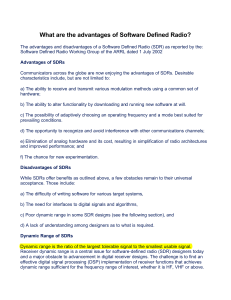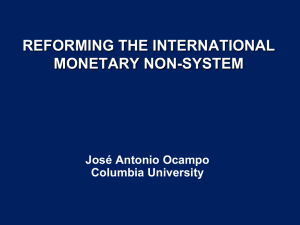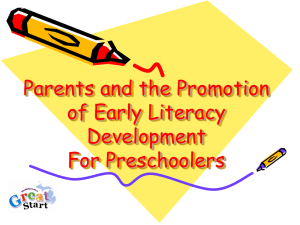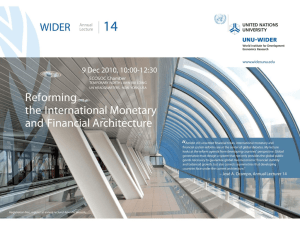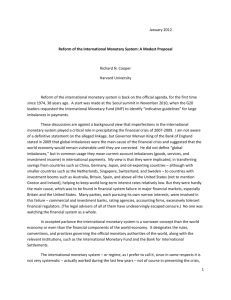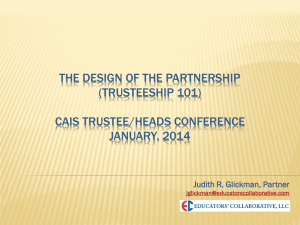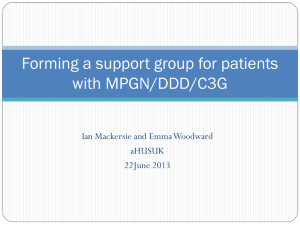A Message From the Office of the South Dakota Retirement System
advertisement
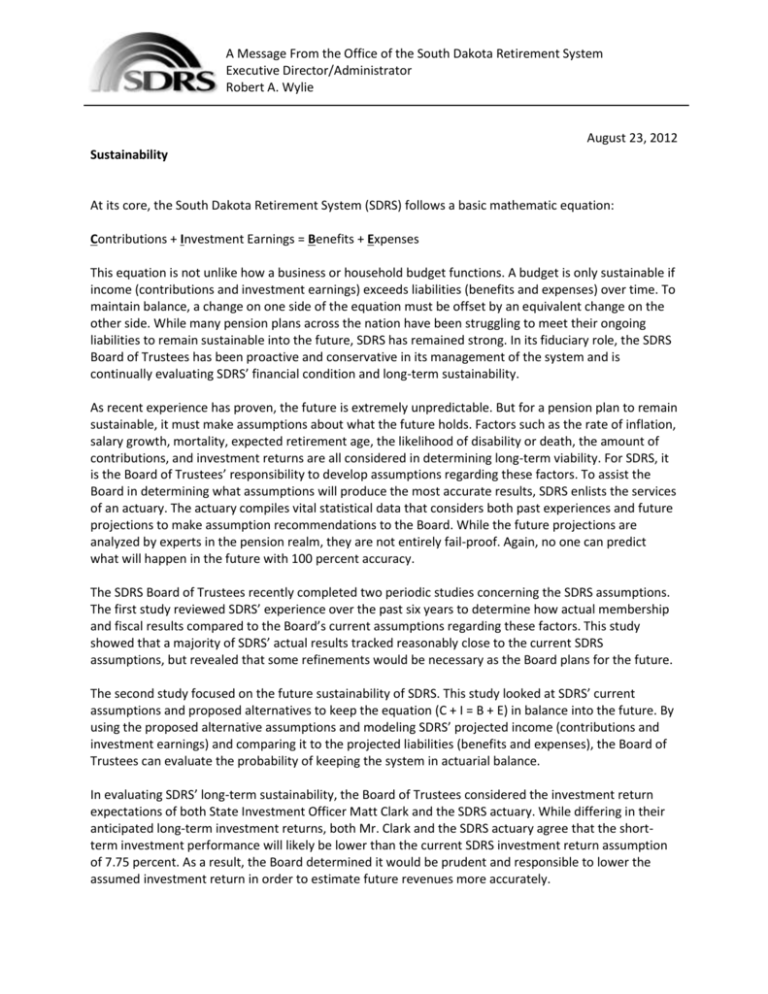
A Message From the Office of the South Dakota Retirement System Executive Director/Administrator Robert A. Wylie August 23, 2012 Sustainability At its core, the South Dakota Retirement System (SDRS) follows a basic mathematic equation: Contributions + Investment Earnings = Benefits + Expenses This equation is not unlike how a business or household budget functions. A budget is only sustainable if income (contributions and investment earnings) exceeds liabilities (benefits and expenses) over time. To maintain balance, a change on one side of the equation must be offset by an equivalent change on the other side. While many pension plans across the nation have been struggling to meet their ongoing liabilities to remain sustainable into the future, SDRS has remained strong. In its fiduciary role, the SDRS Board of Trustees has been proactive and conservative in its management of the system and is continually evaluating SDRS’ financial condition and long-term sustainability. As recent experience has proven, the future is extremely unpredictable. But for a pension plan to remain sustainable, it must make assumptions about what the future holds. Factors such as the rate of inflation, salary growth, mortality, expected retirement age, the likelihood of disability or death, the amount of contributions, and investment returns are all considered in determining long-term viability. For SDRS, it is the Board of Trustees’ responsibility to develop assumptions regarding these factors. To assist the Board in determining what assumptions will produce the most accurate results, SDRS enlists the services of an actuary. The actuary compiles vital statistical data that considers both past experiences and future projections to make assumption recommendations to the Board. While the future projections are analyzed by experts in the pension realm, they are not entirely fail-proof. Again, no one can predict what will happen in the future with 100 percent accuracy. The SDRS Board of Trustees recently completed two periodic studies concerning the SDRS assumptions. The first study reviewed SDRS’ experience over the past six years to determine how actual membership and fiscal results compared to the Board’s current assumptions regarding these factors. This study showed that a majority of SDRS’ actual results tracked reasonably close to the current SDRS assumptions, but revealed that some refinements would be necessary as the Board plans for the future. The second study focused on the future sustainability of SDRS. This study looked at SDRS’ current assumptions and proposed alternatives to keep the equation (C + I = B + E) in balance into the future. By using the proposed alternative assumptions and modeling SDRS’ projected income (contributions and investment earnings) and comparing it to the projected liabilities (benefits and expenses), the Board of Trustees can evaluate the probability of keeping the system in actuarial balance. In evaluating SDRS’ long-term sustainability, the Board of Trustees considered the investment return expectations of both State Investment Officer Matt Clark and the SDRS actuary. While differing in their anticipated long-term investment returns, both Mr. Clark and the SDRS actuary agree that the shortterm investment performance will likely be lower than the current SDRS investment return assumption of 7.75 percent. As a result, the Board determined it would be prudent and responsible to lower the assumed investment return in order to estimate future revenues more accurately. At its September meeting, the Board of Trustees will consider plan design refinements based on the experience study and evaluate the long-term impact that the change in investment return assumption will have on SDRS. By making such refinements and changes, the equation (C + I = B + E) may be out of balance. If that is the case, the Board will have the challenge of recommending a course of action to bring the equation back into balance. Since its inception in 1974, SDRS has operated with the same goal—to provide SDRS members and their families with an outstanding, appropriate, and equitable level of benefits based on the resources available. As such, SDRS benefits are designed to be sustainable over the long-term. While there have been numerous changes in the plan’s structure over the last 38 years, this fundamental goal remains a constant. Rob

